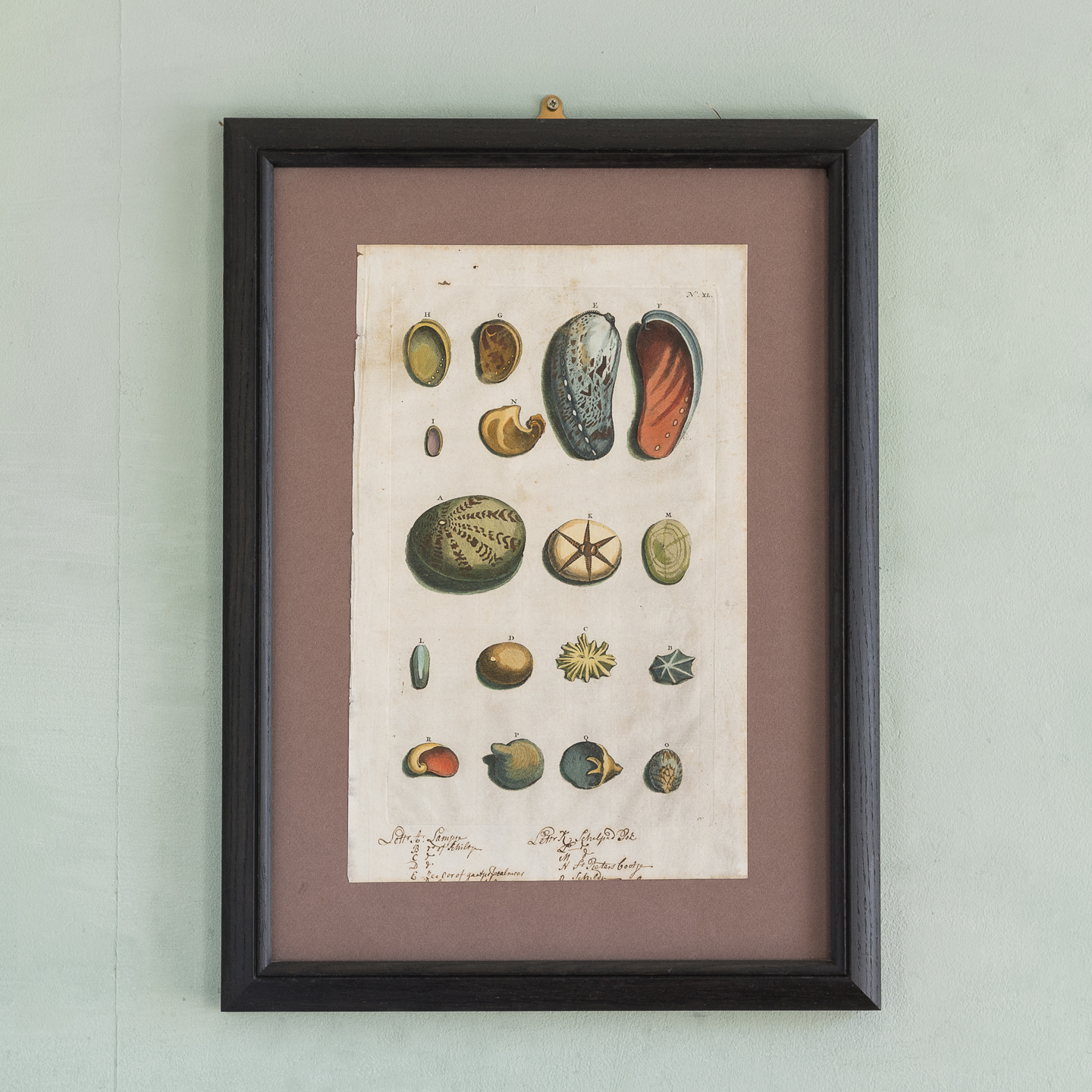No products in the basket.
Archived Stock - This item is no longer available
Original 18th Century engraving of Shells and Crustaceans, in old hand-colour.
Rare copper engravings of 18th Century Shells and Crustaceans
Rare copper engravings based on the drawings by Maria Sibylla Merian; published for the 1766 edition of Amboinische Raritäten-Kammer oder Abhandlung.
Featuring old hand colour and annotations. Framed
SOLD OUT
In stock
Maria Sibylla Merian was a German-born naturalist and scientific illustrator, a descendent of the Frankfurt branch of the Swiss Merian family, founders of one of Europe's largest publishing houses in the 17th century. Merian received her artistic training from her stepfather, Jacob Marrel, a student of the still life painter Georg Flegeland she published her first book of natural illustrations, titled Neues Blumenbuch, in 1675 at age 28.
She had influential contacts in the Dutch East India Company. In 1699 following eight years of painting and studying, under the encouragement of Cornelis van Aerssen van Sommelsdijck, the then-governor of the Dutch colony of Surinam in South America, Merian was awarded a grant by the city of Amsterdam to travel to Surinam. She was forced to return after two years to Europe as result of malaria, but on her return she proceeded to publish her major work, Metamorphosis Insectorum Surinamensium, for which she became famous. Due to her careful observations and documentation of the metamorphosis of the butterfly, she is considered among the most significant contributors to the field of entomology.
Merian accepted a commission to draw the illustrations for the 'Amboinsche Rariteitkamer' using shells from notable Dutch collections of the period. Her drawings for the 1705 edition of ‘Rumphius' book are in the Archives of the Academy of Sciences in St. Petersburg. Rumphius, a Dutch naturalist, worked for the Dutch East India Company and spent most of his life on the island of Ambon, a small but important trading centre in the Dutch East Indies. He was brilliant field naturalist & the first to document the tropical marine life & shells of the area. This work on shells was his chef d’oeuvre, and he named many of the common Pacific shells, of which many are still in use.




